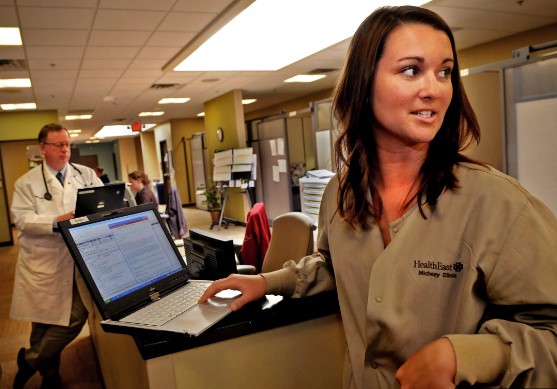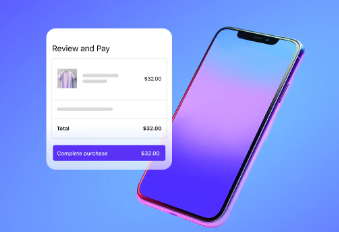In today’s moving world of medicine, accurate documentation is more important than ever. Introducing scribes has allowed healthcare professionals to streamline their work, improve patient care, and lessen administrative burdens. This article delves into the concept of scribing, its development, and the significant advantages it offers to healthcare practices.
Getting Acquainted with Remote Medical Scribing
Remote scribing has emerged as a game changer in the healthcare field. Essentially, a remote medical scribe aids healthcare providers by documenting patient interactions in real-time from a location. This innovative method eases the workload on professionals, enabling them to dedicate attention to patient care. Remote medical scribes play a role in healthcare environments by enhancing the accuracy and efficiency of documentation.
The Evolution of Medical Scribing
Medical scribing dates back to when scribes recorded information on papyrus scrolls. Throughout history, this role has evolved alongside advancements. The advent of health records (EHRs) in the 20th century resulted in a groundbreaking transformation in medical documentation practices. Today, remote medical scribing represents the phase in this progression by utilizing connectivity to enhance healthcare documentation processes.
Benefits of Remote Medical Scribing
One key advantage of remote medical scribing is its ability to boost efficiency.
By delegating the documentation task to scribes, healthcare professionals can attend to patients in a shorter amount of time. This results in increased satisfaction and improved overall clinic performance. Moreover, remote scribes help enhance records’ accuracy, reducing the likelihood of errors and ensuring documentation.
Scribing’s cost-effectiveness is another critical benefit. Hiring on-site scribes can be costly. Opting for scribes provides a more budget-friendly alternative without compromising quality. Clinics can cut down on expenses related to office space, equipment, and employee benefits by adopting scribing, making it an appealing choice for healthcare practices regardless of their size.
Understanding How Remote Medical Scribing Operates
The scribing process commences with the healthcare provider connecting with a remote scribe through a secure digital platform. During consultations, the provider communicates with the scribe in time, explaining the patient’s condition, treatment strategies, and other pertinent details. The virtual medical scribe accurately and promptly documents this information into the EHR system.
Incorporating technology is essential for facilitating communication between providers and remote scribes. Secure video conferencing tools and encrypted data transmission guarantee patient privacy and confidentiality. Remote medical scribes efficiently document patient information through these technologies, allowing healthcare providers to uphold detailed and precise records.
The Influence on Healthcare Practices
Real-life instances showcase the effects of medical scribing in healthcare settings. For example, a bustling clinic in New York adopted scribing and saw a 30% rise in patient flow. Due to reduced tasks, healthcare providers noted stress levels and better work-life balance. Patients also experienced wait times and focused interactions with their healthcare providers.
Another case comes from a rural healthcare center in Texas, where remote medical scribes helped bridge the gap between resources and patient care needs. The facility could offer accurate documentation by utilizing scribes, improving patient outcomes and clinic efficiency.
Read also: Challenges and Solutions in Remote Medical Scribing
Addressing Obstacles in Remote Medical Scribing
Although remote medical scribing offers advantages, it also poses challenges. One common issue is the risk of miscommunication between providers and remote scribes. To tackle this problem, clear protocols and effective training programs are crucial. Regular feedback sessions and ongoing improvement efforts ensure collaboration and precise documentation.
Another hurdle is ensuring privacy and data security. Healthcare providers must select scribing services that adhere to strict data protection regulations. Implementing cybersecurity measures, like encryption and secure access controls, protects information and upholds confidentiality.
Training and Requirements for Remote Medical Scribes
Individuals aspiring to become scribes must complete specialized training to acquire the necessary skills and knowledge. Training programs typically cover terminology, health record (EHR) systems, and documentation procedures. Additionally, scribes receive guidance on communication methods and real-time documentation practices.
Healthcare professionals interested in pursuing a career as scribes should demonstrate strong attention to detail, proficient typing abilities, and the capacity to work efficiently under pressure. Certification from organizations like the American Healthcare Documentation Professionals Group (AHDPG) can boost a scribe’s qualifications and enhance employment opportunities.
The Future of Remote Medical Scribing
The future outlook for scribing appears promising, with new trends and advancements on the horizon. One significant trend is the incorporation of voice recognition technology, which enables healthcare providers to input information directly into the EHR system. This technology streamlines the documentation process and improves efficiency.
Another emerging trend involves expanding scribing services across healthcare settings, including telemedicine platforms and specialty clinics. The adaptability of remote scribes positions them as assets in medical fields ranging from general practice to specialized areas.
A virtual medical assistant will enhance care and clinic operations in response to evolving healthcare demands.
Wrap-up and Encouragement
In summary, remote medical scribing reshapes healthcare documentation by boosting efficiency, precision, and cost-effectiveness. By easing the load on healthcare providers, remote scribes empower professionals to prioritize care. Scenarios illustrate the tangible benefits of clinic workflows and patient satisfaction, underscoring the value of medical scribing in modern healthcare settings. With the increasing need for scribes, healthcare practitioners and institutions must stay abreast of this innovative solution and contemplate its integration into their practices.
For healthcare professionals, medical scribes, and clinic managers keen on exploring the advantages of scribing, now is the opportune moment to act. Consider incorporating scribing services into your practice to enhance documentation processes and elevate patient outcomes. You can ensure a rollout by keeping informed about emerging trends and investing in quality training initiatives. Enjoy the benefits of this progressive approach to medical documentation. Embark on the journey of scribing today to elevate your healthcare practice to new heights.
Optimize your online impact with professional medical search engine optimization from SEOEchelon.com. Discover the benefits now!





